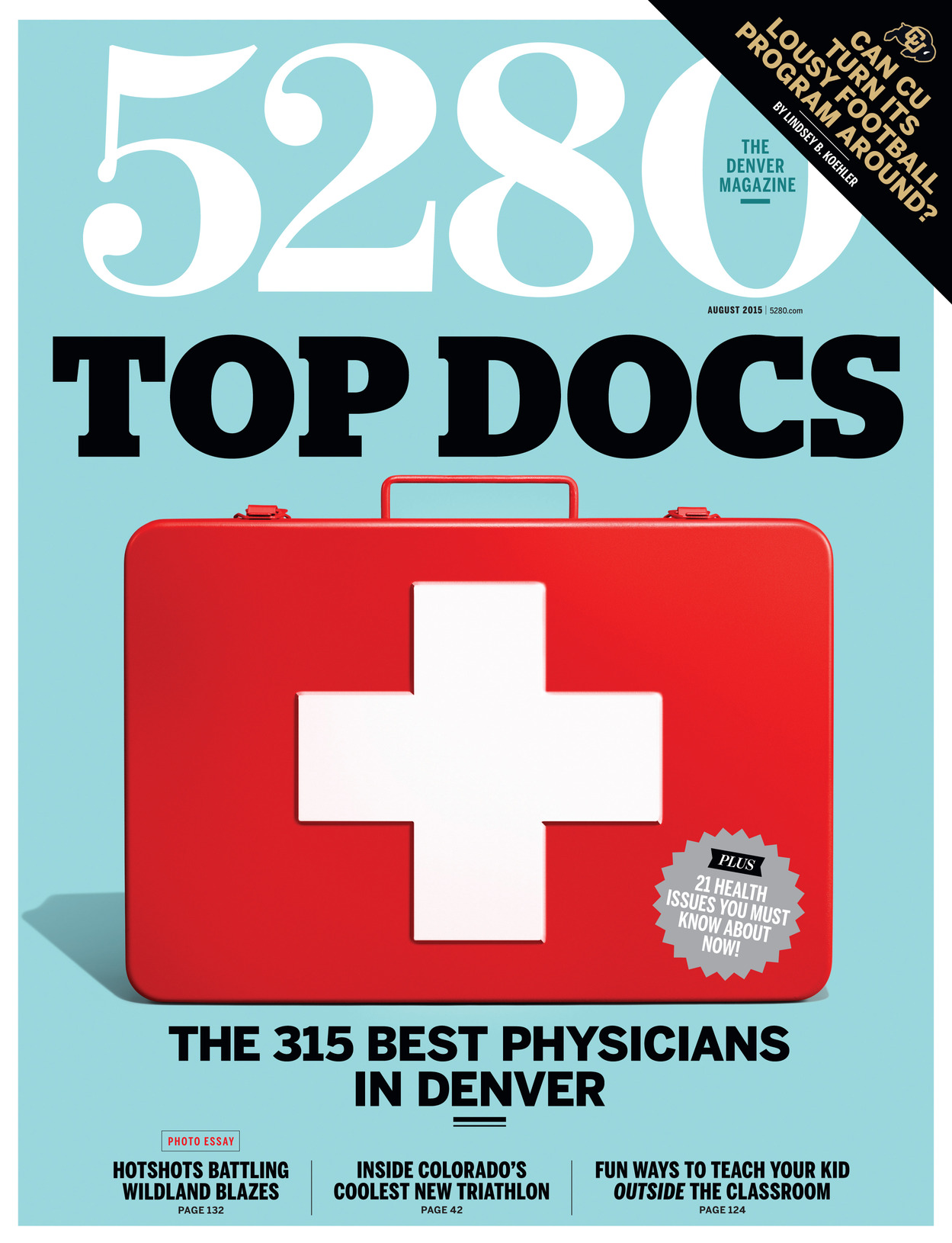The Local newsletter is your free, daily guide to life in Colorado. For locals, by locals.
Andrew Todd’s office doubles as his playground. As a Denver-based federal research biologist, Todd spends his days monitoring trout in creeks throughout the San Luis Valley—and in the evenings, he casts fishing lines into those same waters. When he started running between them to squeeze in workouts, too, the 40-year-old was inspired to turn his after-hours routine into what must be the state’s most recreative triathlon: the Rocky Mountain Flyathlon. Now in its second official year, the event combines trail running, fly-fishing, and craft-beer drinking. On August 15, 60 participants will pound the dirt in the Rio Grande National Forest near Saguache, pausing only to fish for trout (rainbow, brown, brook, or Rio Grande cutthroat). Last year’s race raised $6,500 for Colorado Trout Unlimited, an organization that supports watershed restoration projects; this year’s goal is more than $10,000. Here’s what it takes to win the state’s most unique triathlon.
 Shotgun Start: Before you toe the starting line, tow a beer ration to the Upper Crossing Guard Station for the “voluntary” bottle share the evening before the race. Your offering should be eight percent ABV or higher, barrel-aged, and local (within 50 miles of Saguache). Hint: Bring a brew from Poncha Springs–based Elevation Beer Company.
Shotgun Start: Before you toe the starting line, tow a beer ration to the Upper Crossing Guard Station for the “voluntary” bottle share the evening before the race. Your offering should be eight percent ABV or higher, barrel-aged, and local (within 50 miles of Saguache). Hint: Bring a brew from Poncha Springs–based Elevation Beer Company.
 The Course: From the starting line at Middle Creek trailhead, runners will follow seven miles (out and back) of single-track along Middle Creek and East Middle Creek. At this point, short-coursers are done. Gluttons for punishment will add a five-mile loop that includes WTF Hill—an aptly named climb of more than 500 feet in less than a half-mile.
The Course: From the starting line at Middle Creek trailhead, runners will follow seven miles (out and back) of single-track along Middle Creek and East Middle Creek. At this point, short-coursers are done. Gluttons for punishment will add a five-mile loop that includes WTF Hill—an aptly named climb of more than 500 feet in less than a half-mile.
 The Fish: There are no restrictions on where you choose to cast, but you’ll be docked points if you don’t land a trout. You must take a photo of your fish positioned along the top of your race bib, which is marked with a ruler to help gauge length. There are rules about how you snag your scaly prize, too: No smuggling dead fish onto the course in your Camelbak, Todd warns.
The Fish: There are no restrictions on where you choose to cast, but you’ll be docked points if you don’t land a trout. You must take a photo of your fish positioned along the top of your race bib, which is marked with a ruler to help gauge length. There are rules about how you snag your scaly prize, too: No smuggling dead fish onto the course in your Camelbak, Todd warns.
 The Equipment: Most people stuff a packable fly rod, a lightweight reel, and a handful of lucky flies (roughly two pounds of gear) into a running backpack. You can bring a two-foot spinner rod, but you will be mocked mercilessly. Don’t forget a camera to snap a photograph of your prized fish. Using your hands to show your catch was “this big” doesn’t count.
The Equipment: Most people stuff a packable fly rod, a lightweight reel, and a handful of lucky flies (roughly two pounds of gear) into a running backpack. You can bring a two-foot spinner rod, but you will be mocked mercilessly. Don’t forget a camera to snap a photograph of your prized fish. Using your hands to show your catch was “this big” doesn’t count.
 The Scoring: Your official score is your running time minus your “fish bonus.” The fish bonus is based on the length and species of fish you catch. Last year, competitors were able to subtract three minutes from their times for every one inch of fish caught, and those who caught wily Rio Grande cutthroats got to take six minutes off their times.
The Scoring: Your official score is your running time minus your “fish bonus.” The fish bonus is based on the length and species of fish you catch. Last year, competitors were able to subtract three minutes from their times for every one inch of fish caught, and those who caught wily Rio Grande cutthroats got to take six minutes off their times.
 The Spoils: Trophies—metal fish mounted on wood bases—are awarded for the male and female Flyathletes of the Year (short and long course), biggest fish (last year, a nine-inch rainbow), smallest fish, top fund-raiser, and nearly top fund-raiser. Racers rally supporters to donate funds via the Flyathlon’s website. Quick tip: Promising pals a sixer usually helps.
The Spoils: Trophies—metal fish mounted on wood bases—are awarded for the male and female Flyathletes of the Year (short and long course), biggest fish (last year, a nine-inch rainbow), smallest fish, top fund-raiser, and nearly top fund-raiser. Racers rally supporters to donate funds via the Flyathlon’s website. Quick tip: Promising pals a sixer usually helps.
—Icons by Sean Parsons









